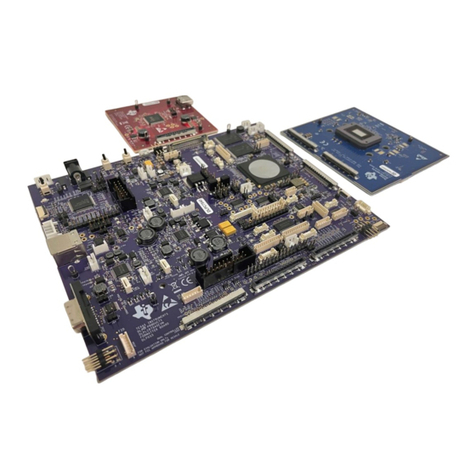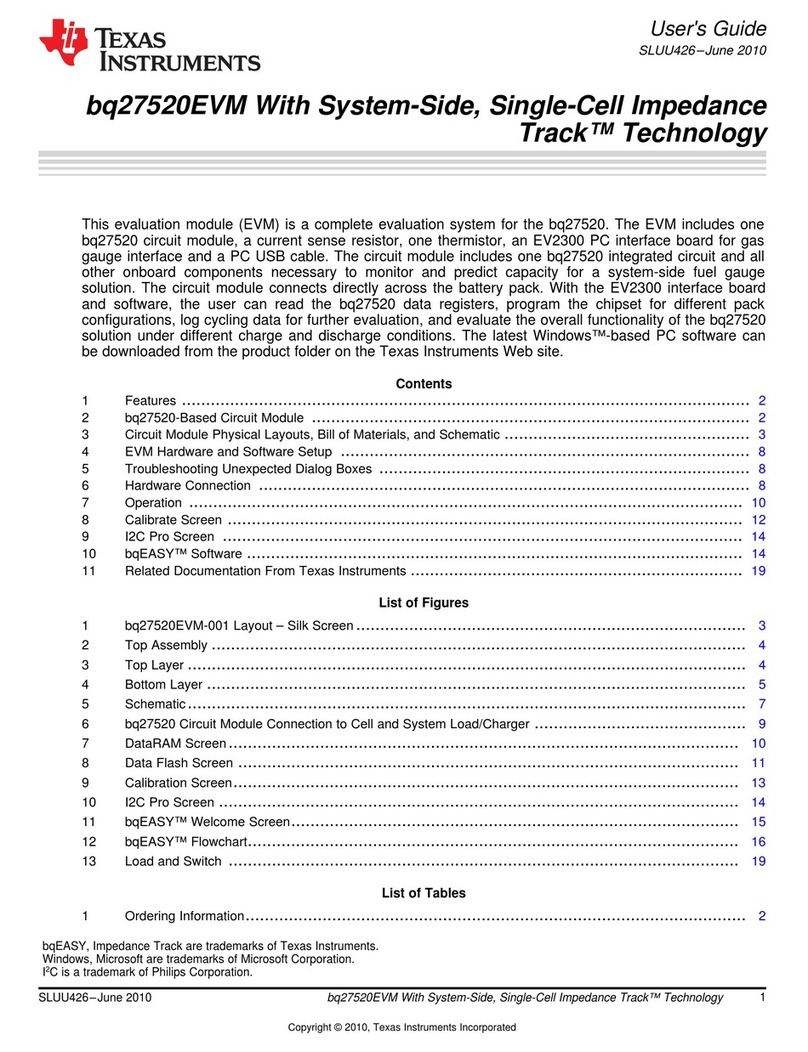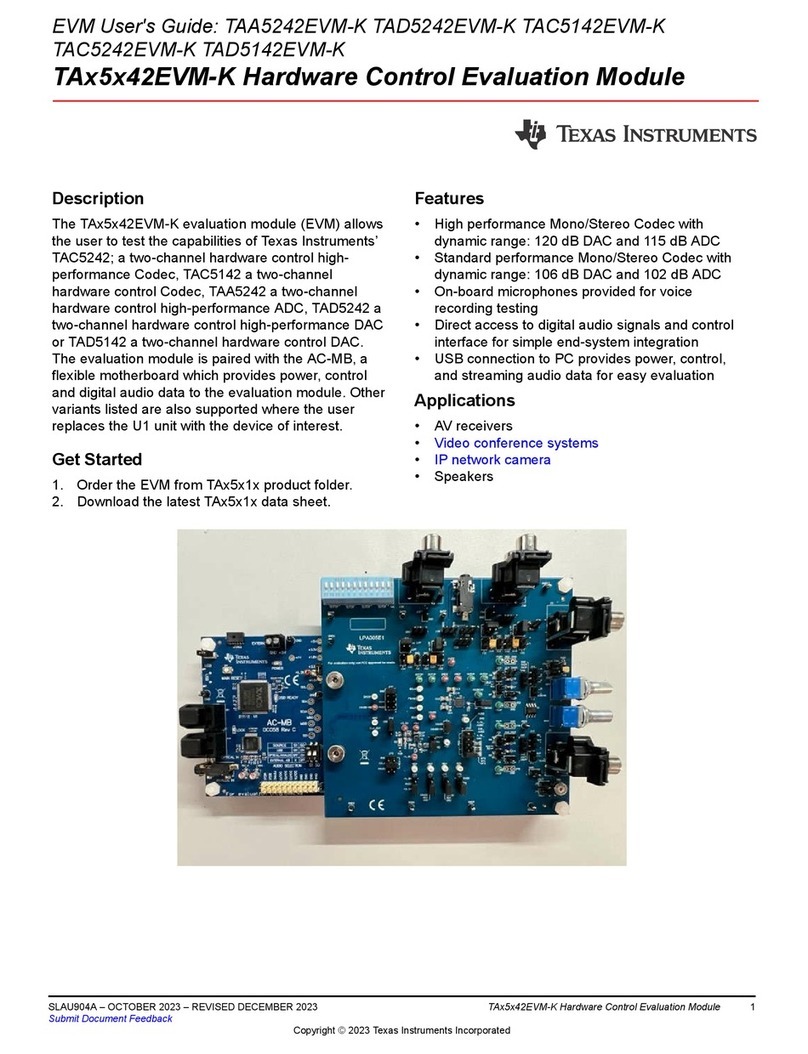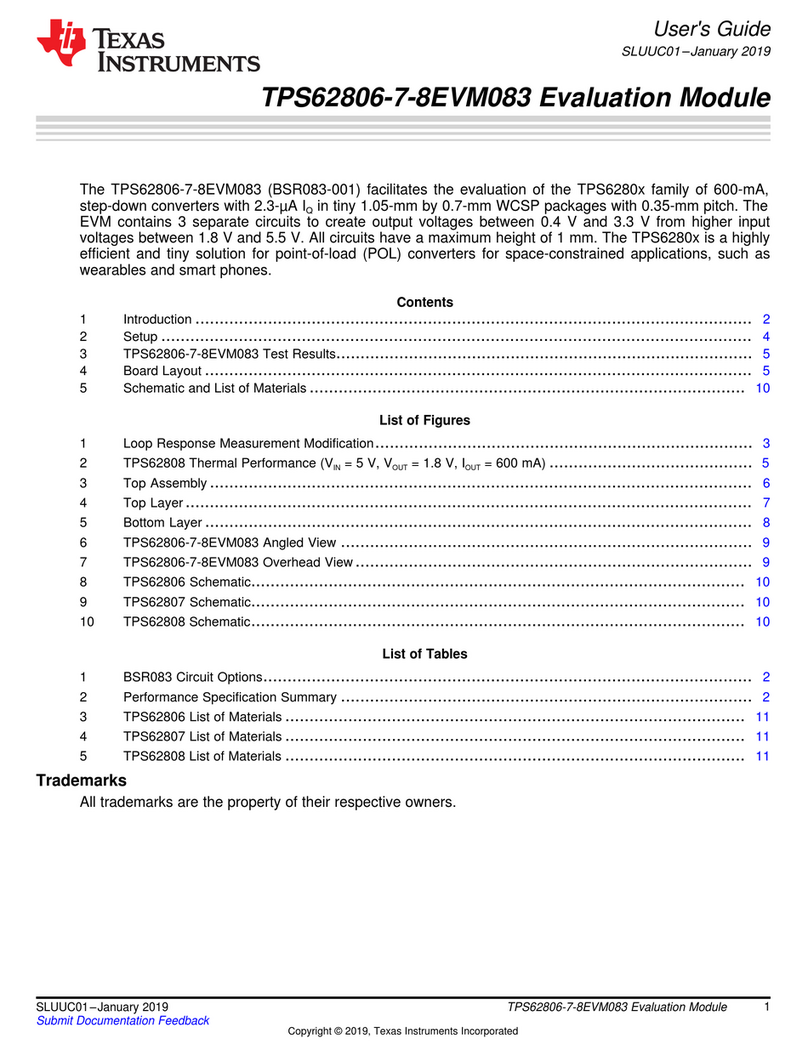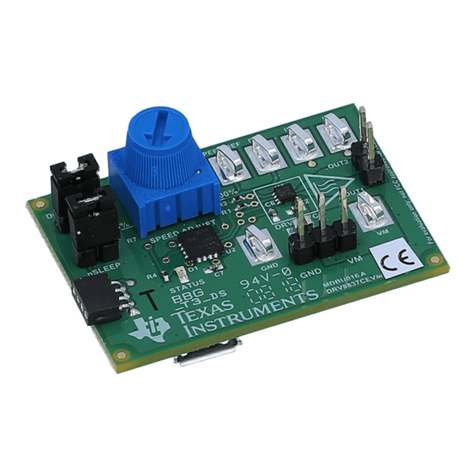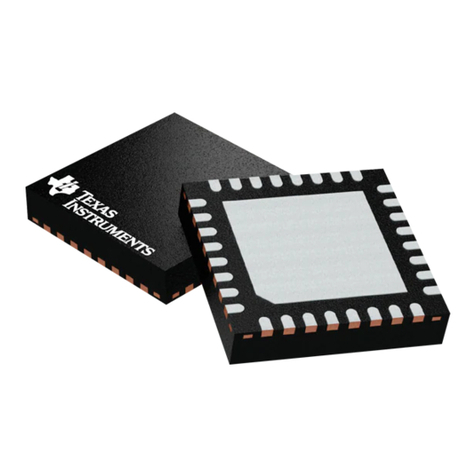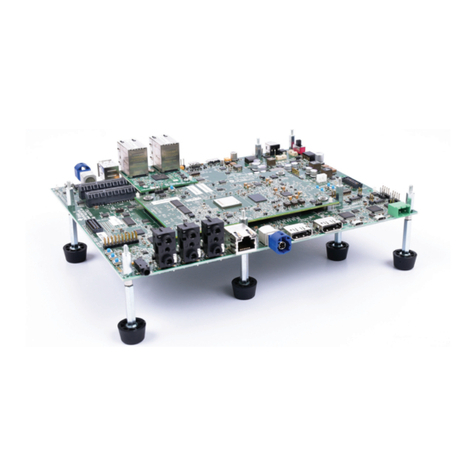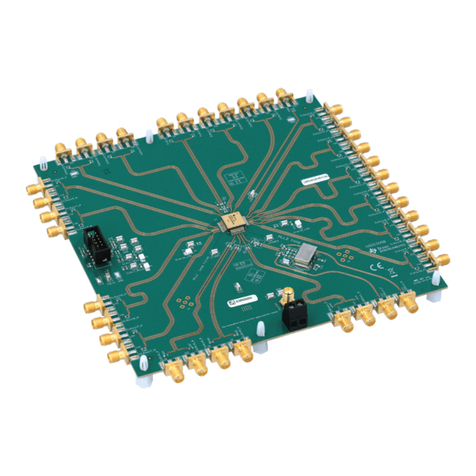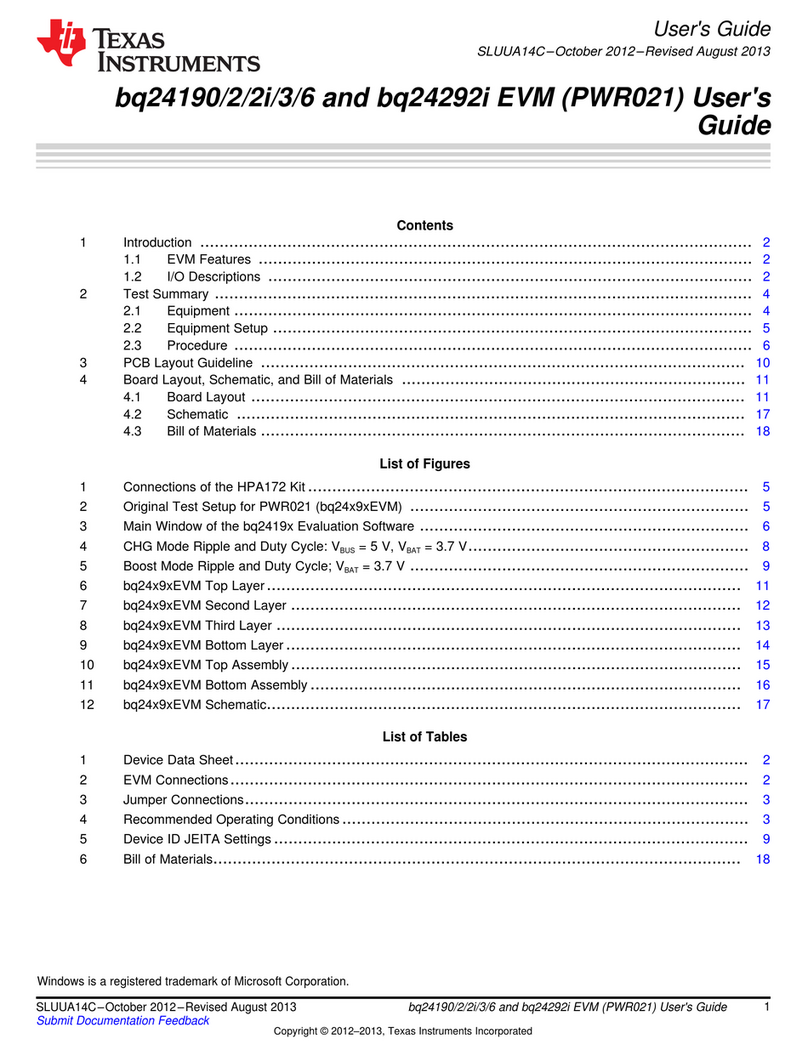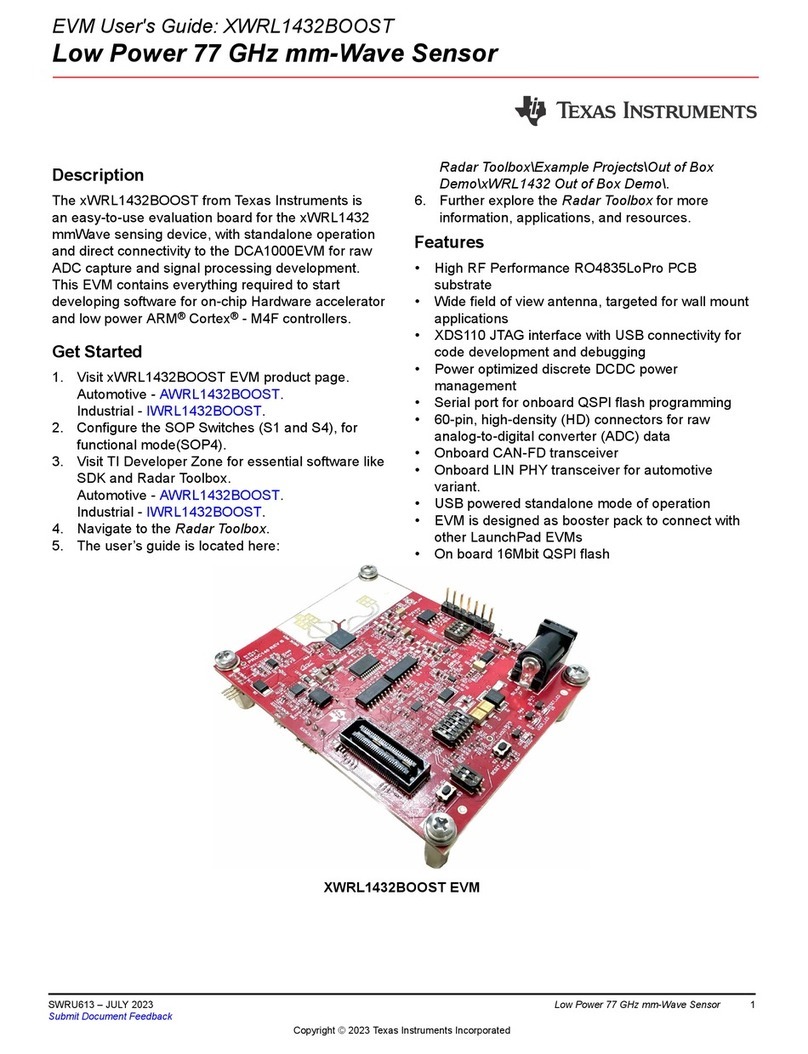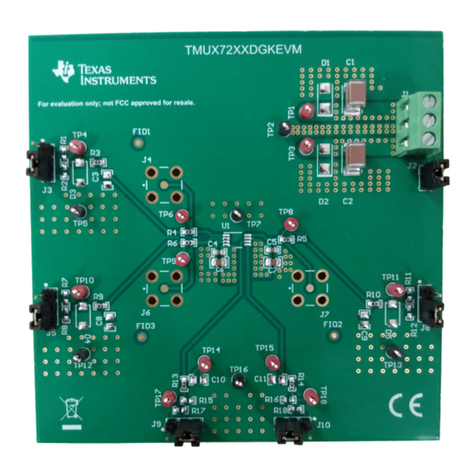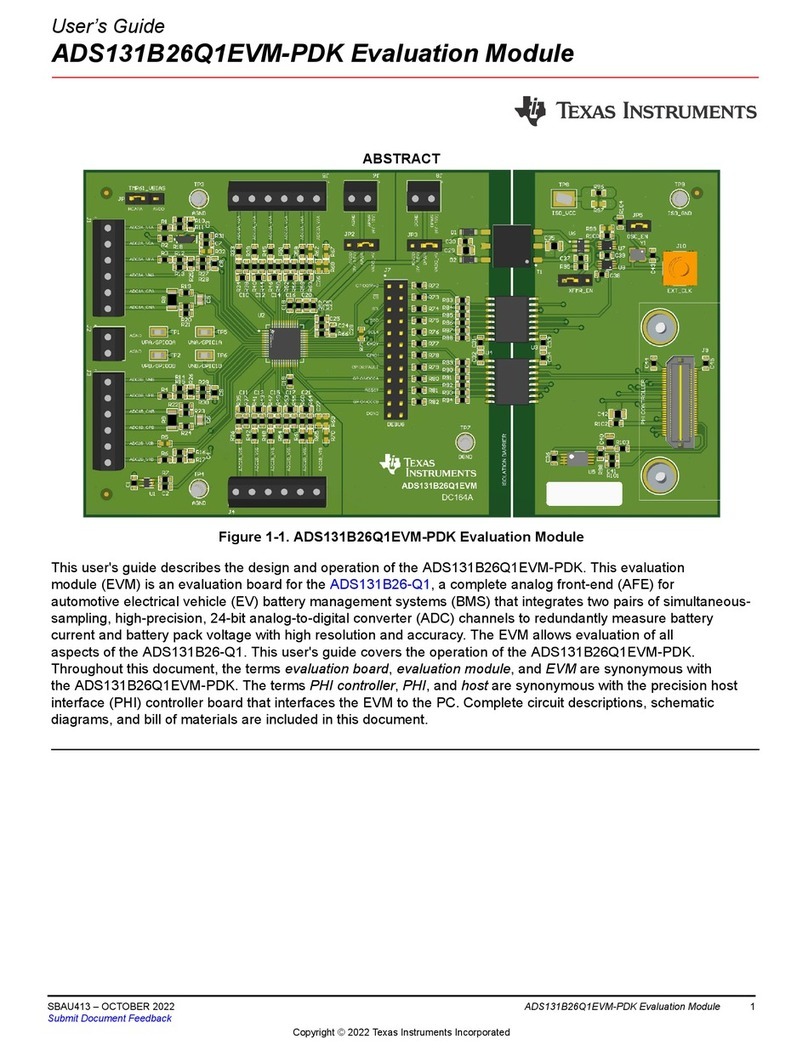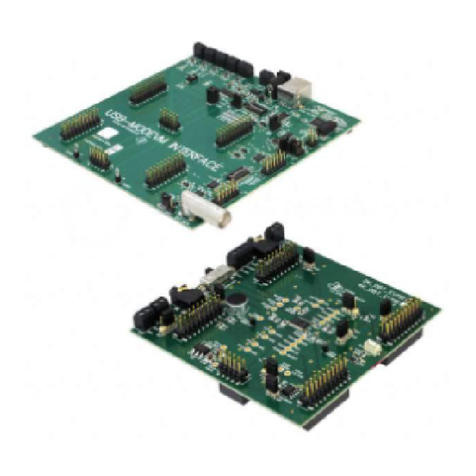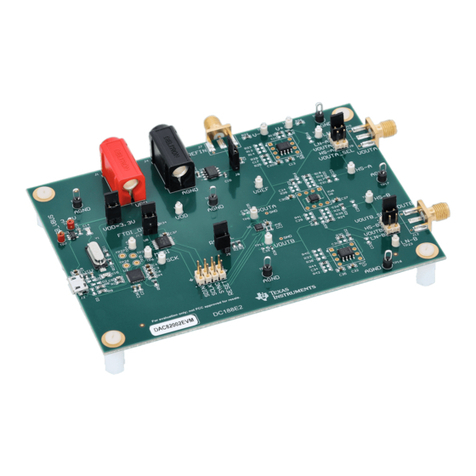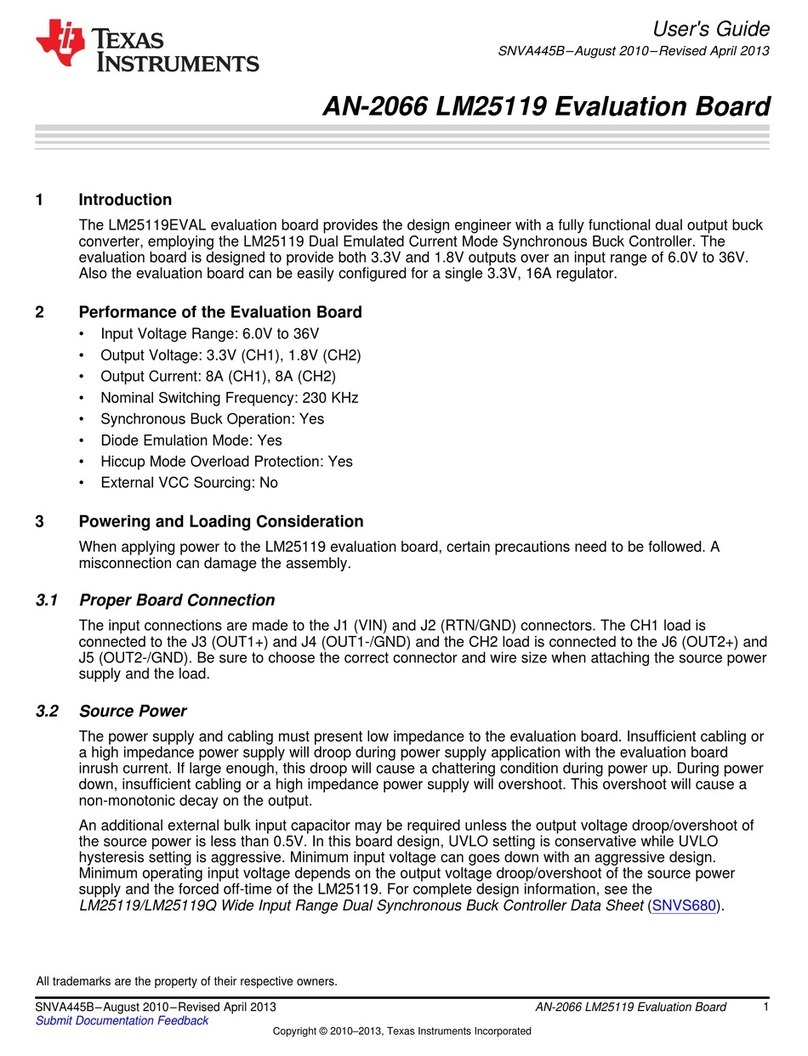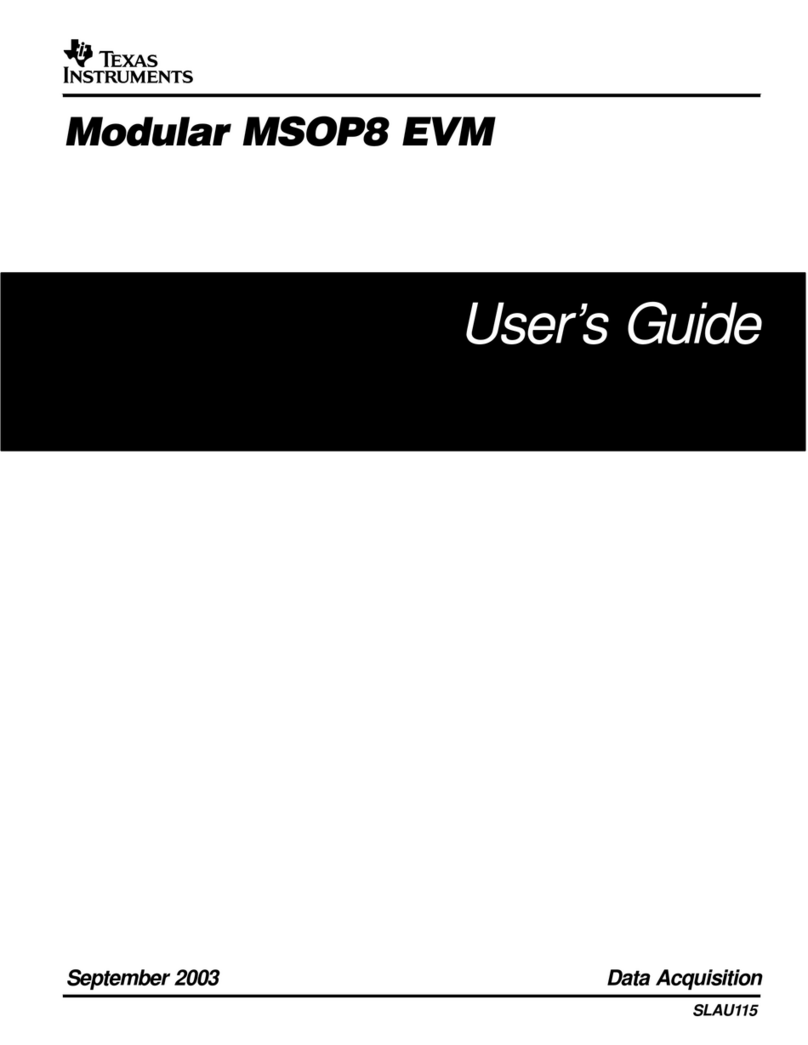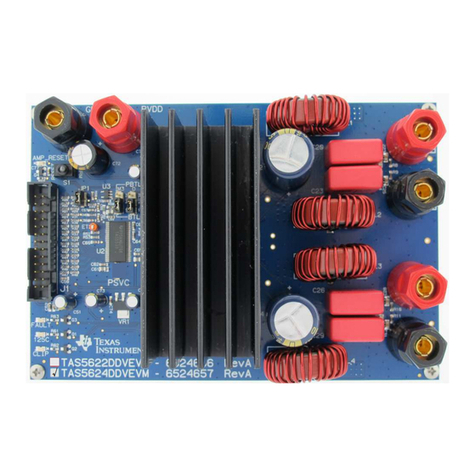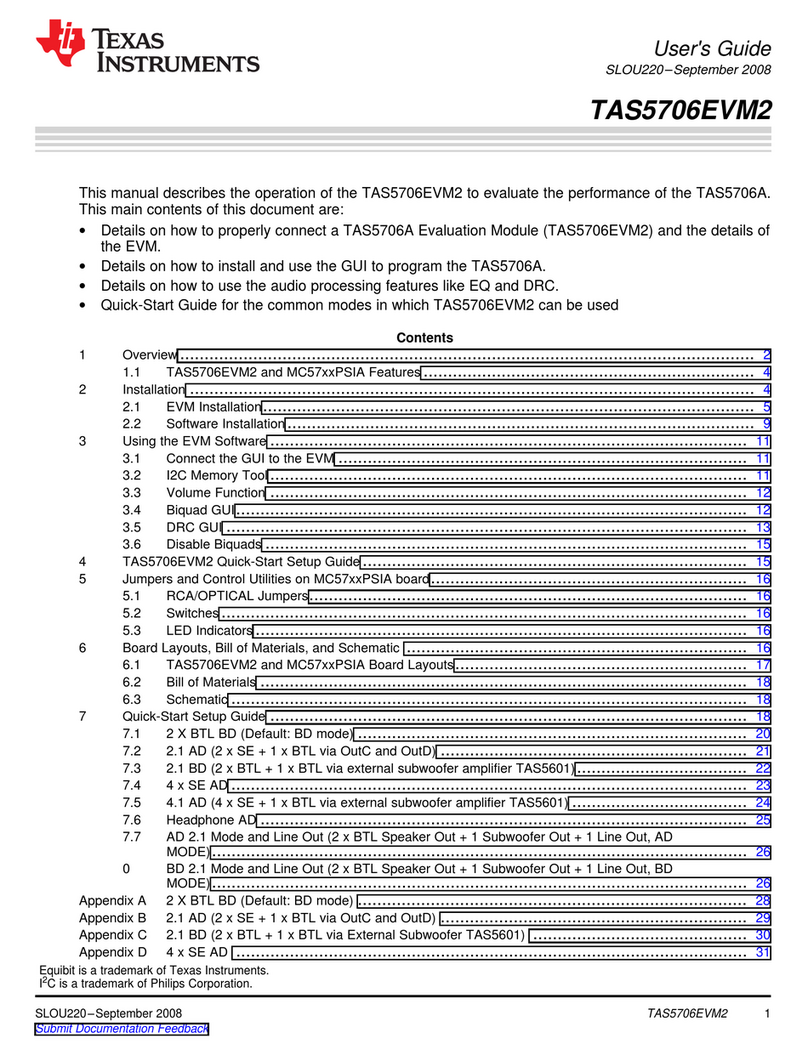
1
DLPU096–November 2019
Submit Documentation Feedback Copyright © 2019, Texas Instruments Incorporated
DLP5534Q1EVM Evaluation Module User's Guide
User's Guide
DLPU096–November 2019
DLP5534Q1EVM Evaluation Module User's Guide
The DLP5534Q1 Evaluation Module (EVM) is a complete electronic subsystem designed to drive the
DLP5534-Q1 chipset. The DLP5534-Q1 chipset consists of the DLP5534-Q1, the DLPC230-Q1, and the
TPS99000-Q1. When combined with illumination and projection optics, 405 nm and other LEDs this EVM
can be used to develop an automotive grade projector for applications such as transparent window display
utilizing phosphor film(s) embedded in a window.
Except for the DMD, there are no optical elements provided with this EVM. It is expected that this EVM is
procured in order to mount to a custom designed projector.
The DLP5534Q1 EVM is not a production design. It is intended for evaluation only.
Contents
1 User Guide Overview........................................................................................................ 2
1.1 What is in the DLP5534Q1 EVM ................................................................................. 2
1.2 Specifications........................................................................................................ 7
2 Quick Start.................................................................................................................... 9
2.1 Kit Assembly Instructions.......................................................................................... 9
2.2 Software Installation .............................................................................................. 10
2.3 Powering-Up EVM................................................................................................. 10
2.4 Connecting EVM to the DLPC230-Q1 Control Program ..................................................... 10
2.5 Steps to Reprogram the Onboard Flash Memory............................................................. 11
3 Optic Engine Requirements............................................................................................... 11
List of Figures
1 EVM Controller PCB ........................................................................................................ 2
2 EVM Illumination Driver PCB............................................................................................... 4
3 EVM Cables .................................................................................................................. 6
4 EVM Cable Connections.................................................................................................... 9
5 Connecting to the DLPC230-Q1 Using the DLPC230-Q1 Automotive Control Program ......................... 10
6 DLPC230-Q1 Automotive Control Program Communication Settings............................................... 11
List of Tables
1 Controller PCB Ports........................................................................................................ 3
2 Controller LED Indicators................................................................................................... 3
3 Controller PCB Switches.................................................................................................... 3
4 Illumination Driver PCB Ports.............................................................................................. 5
5 EVM Cables .................................................................................................................. 6
6 Electrical Specifications..................................................................................................... 7
7 EVM PCB Components Which are Not Rated for –40°C to 105°C ................................................... 7
Trademarks
All trademarks are the property of their respective owners.

